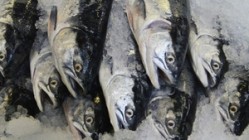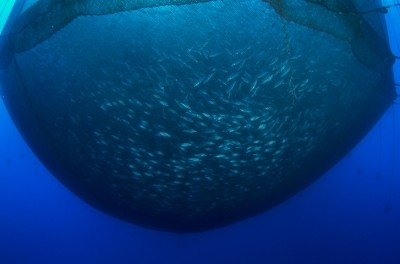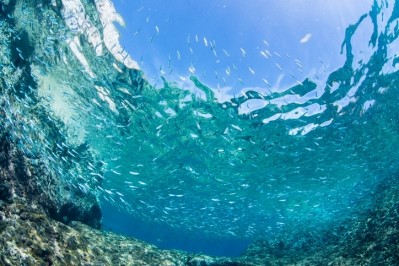Search continues for fish meal replacements: US animal nutritionists rate non-GM soy cultivar alternatives

In a 12 week trial, part-funded by the Illinois Soybean Association, scientists based at the University of Maryland and US soymeal supplier, Navita Premium Feed Ingredients (NPFI), found no significant difference in terms of weight gain and growth in cobia fed a partial soybean protein diet and those supplemented with a fish meal only based formulation.
Growing pressure on fishmeal stocks
Feed for aquaculture is growing at about 17%, according to the most recent Alltech’s annual Global Feed Tonnage Survey, to reach 40.4 million metric tons in 2013. And fishmeal (FM) replacement in diets for intensive aquaculture has become a high priority area for the sector.
“As the world's population and protein demands continue to increase, more pressure is placed on the aquaculture industry to supply safe, sustainable seafood. However, with capture fisheries at their maximum sustainable levels since the mid-1980s, or with declining yields, fishmeal (FM) and fish oil (FO) production has remained static over much of the last decade. Without suitable FM replacements the aquaculture industry will be unable to expand to meet current and anticipated global needs,” report the US researchers.
It is also critical, they say, to develop and evaluate non-genetically modified (GM) feedstuffs for use in aquaculture diets where GM products are prohibited as the industry continues to expand.
Several potential protein types are being explored as FM replacements including by-products from animal production, seafood processing, algal meals, and algal biomass as well as by-products from the growing biofuel industry.
However, the authors note challenges can arise when replacing FM with any alternative protein source, such as the presence of anti-nutritional factors (ANFs) when utilizing high inclusions of plant proteins.
Nutrients remain intact
But they report that marker-assisted breeding programs at NPFI have recently developed improved soybean cultivars to produce meals that “outperform” soy protein concentrate (SPC) when included in diets of several marine carnivorous fish. “Some theoretical benefits of these naturally rendered products include higher digestibility of nutrients, discontinued need for flammable/harmful solvents, potential decrease in processing energy, and milder processing which may leave desirable nutrients intact and thus, available to the target fish,” said the researchers.
The current study was thus undertaken to examine the effects of utilizing those NPFI cultivars - in this case 3010 solvent extracted meal and 3032 cold-pressed cake meal - at high FM protein replacement levels in juvenile cobia.
The trial involved the use of the non-GM soy meals to replace 50, 60 or 70% and 40, 50, or 60% of FM protein, with those formulations compared to a FM based reference diet.
Taurine was added to the diets to meet the requirement of this essential nutrient for the species in question, said the team.
Findings
The results indicated that, after 12 weeks, there was no difference between the control and non GM soymeal groups for weight and growth, or on a sensory basis either in terms of the quality of the cobia fillets.
“However the 3010 50% diet performed significantly better than the 3032 50 and 60% diets in regard to WG, SGR, and protein efficiency,” said the US researchers.
The higher inclusion levels of 3032 resulted in significantly poorer performance in feed conversion ratio (FCR), they reported.
The authors also found there were no indicators of intestinal enteritis in the fish during the trial, an outcome observed previously in various other teleost species when high quantities of commodity soybean meal have been included in their diet.
Fish oil substitutes for salmon feed
In another recent study looking at sustainable fish feed options, Canadian scientists showed total replacement of fish oil with camelina oil (Camelina sativa) in the diet of Atlantic salmon (Salmo salar) does not affect weight gain and growth rate in the fish.
The data, published in the journal Food Chemistry, indicated that camelina oil and meal may have potential to replace fish oil and fish meal, but perhaps not at all life stages: Results indicate it may be an effective strategy for Atlantic salmon during their the juvenile and grow-out phase.
The authors examined the effect of replacing 100% of fish oil with camelina oil, as well as the effect of partial replacement of fish meal with camelina meal at a level of 10%.
The study showed that, after 16 weeks of feeding, there were no differences between the camelina and control groups for weight and growth for the oil replacement group only, and, importantly, there were no difference in sensory quality of salmon fillets for the fish oil or camelina oil diets.
However, weight and growth rate were lower when fish meal was partially replaced by 10% camelina meal.
“It is questionable whether both camelina oil and specifically camelina meal cannot support growth, or whether other plant protein sources may be more suitable to include with camelina oil,” wrote the researchers.
Source: Aquaculture
DOI: 10.1016/j.aquaculture.2014.08.003
Title: Partial replacement of fishmeal, poultry by-product meal and soy protein concentrate with two non-genetically modified soybean cultivars in diets for juvenile cobia, Rachycentron canadum
Authors: A.M. Watson, A. Buentello, A.R. Place












